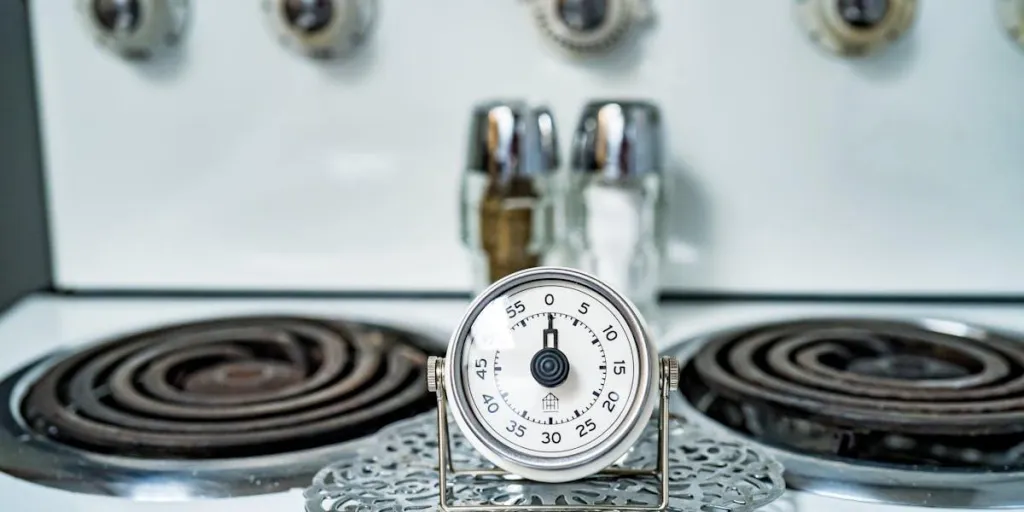Undercooked or overcooked food can easily set a chef’s day in the wrong direction. Guesswork, especially when dealing with the standard kitchen hustle and bustle, can be highly ineffective for following specific recipes. Thankfully, kitchen timers offer the perfect solution! These tools allow for precise cooking times, making them great for everything from baking to meat staples.
This article will highlight what to consider before stocking up on kitchen timers to ensure you are offering your buyer’s the best options in 2024!
Table of Contents
Types of kitchen timers
Factors to consider when selecting kitchen timers
Rounding up
Types of kitchen timers
Mechanical kitchen timers

These kitchen timers may be old school, but they have various advantages that make them popular with many cooks. For starters, mechanical kitchen timers don’t require batteries or electricity—consumers just wind them up and go, making them nearly foolproof. These timers are often incredibly durable, as a simple, high-quality one can last for years without any issues.
Digital kitchen timers
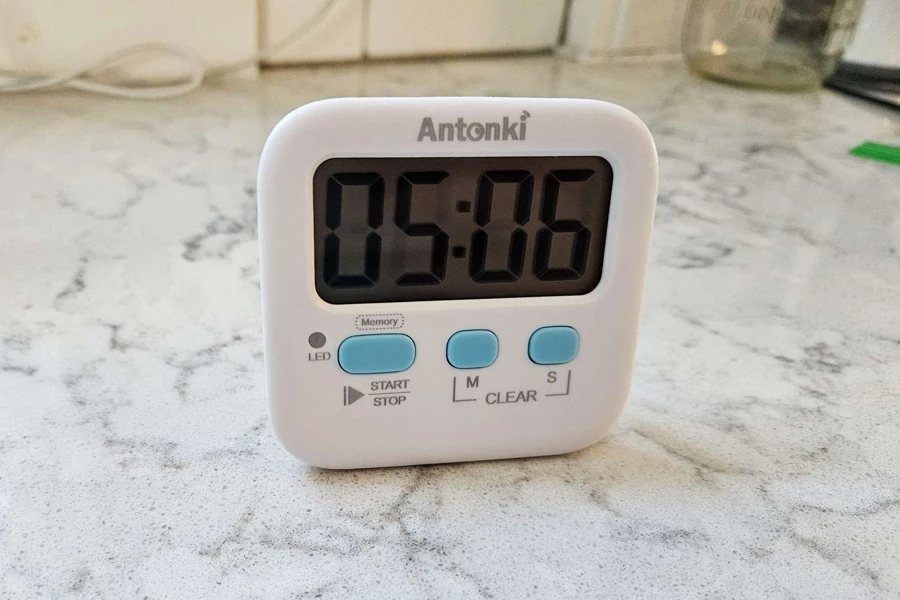
Some recipes need more precision than what mechanical timers can offer. Luckily, digital timers are more than capable of handling such delicate tasks. These timers provide highly precise time-keeping for those recipes where cooking times matter. For this reason, digital kitchen timers are perfect for baking or achieving the preferred level of doneness in meats.
Smart timers
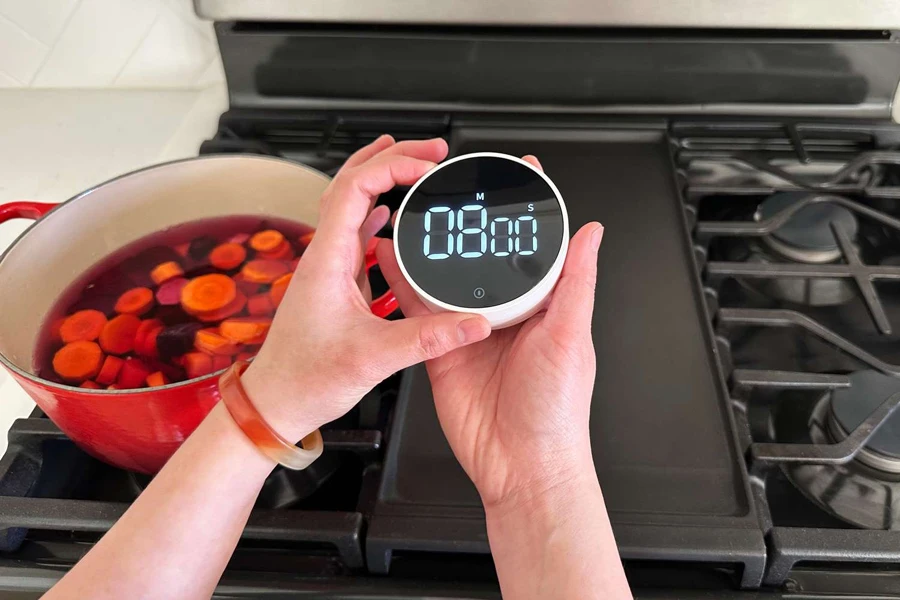
Smart kitchens are slowly taking over, pushing many people toward smart timers. Beyond that, smart timers offer many benefits over their mechanical and digital counterparts. And voice control is one of the benefits. Consumers can set and manage timers hands-free using voice commands with smart speakers, for example Google Home or Alexa.
This is fantastic for consumers with busy hands, such as those in the middle of complex kitchen tasks or covered in dough. And these timers wouldn’t be smart if they didn’t have remote control! Many smart timers have smartphone apps so consumers can start, stop, adjust, and check on timers anywhere in their homes (or even when they are out).
Factors to consider when selecting kitchen timers
Accuracy

In general, digital timers are often more accurate than mechanical timers. Digital timers use electronic components for timing, while mechanical ones rely on gears and springs, which can be prone to slight variations. Certifications are another aspect that gives more insight into a timer’s accuracy.
Timers with certifications from independent organizations, like NSF International, are usually more likely to have passed rigorous accuracy tests. While not a definitive indicator, price can also help indicate accuracy. Generally, more expensive timers tend to have better build quality and potentially more accurate components.
Volume and alert type
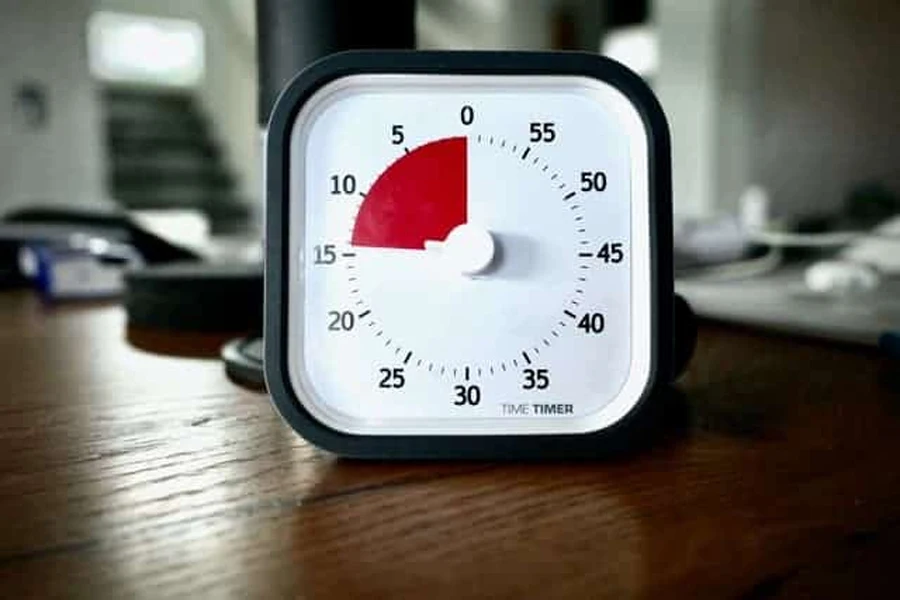
Kitchen timers can come with different alert types to fit consumers’ changing preferences. They can have traditional bells, beeps, vibrations, and many more. Here are more details on each alert type.
Traditional ringing bell
This alert type produces sustained ringing sounds, with their intensity and duration varying depending on the timer’s design. Regardless of the preferred variation, the sound is unique and distinctive enough to cut through kitchen noise. Since traditional mechanical clocks have this alert type, it will add a charming, retro feel to any kitchen.
Beeps
Digital timers with beeps are the classic high-pitched alert types. They offer something familiar while being widely available and effective for most people in moderately noisy environments. They may also come in different variations, like single beeps, continuous beeps, and beeps with varying pitches. However, beeps can be annoying if they are too shrill or repetitive. The alert type may also not be easily heard if the kitchen is very noisy or for those hard of hearing.
Adjustable volume
Traditional digital timers with beeps may be hard to hear in certain scenarios, but manufacturers have fixed the problem by offering adjustable volume. These timers now allow consumers to control their alert’s loudness from low to high, letting them adapt the volume based on their situation or task. The only downside is that these timers may require more fiddling with settings to get the right volume initially.
Flashing lights
Some consumers may be unable to hear sounds or don’t like them, so they prefer visual cues instead. Hence, some kitchen timers come with LED lights that blink or flash brightly when the timer goes off—-usually, they also come paired with traditional beeps. Plus, flashing lights are excellent for noisy kitchens or those hard of hearing. The alert type can also be less jarring than sudden loud beeps. However, timers with flashing lights may need to be in consumers’ line of sight for maximum effectiveness, making them less useful for those away from the kitchen.
Vibration
Where sound is too much of a distraction, consumers can go for timers with vibration alerts. These timers vibrate discreetly (like phone vibrations) and come with designs that consumers can wear on their wrists or clip to their clothing. Since they are silent, consumers can use them in meetings or quiet environments, with their tactile notification ensuring they don’t miss the alert. On the flip side, some people may find the vibrating sensation startling.
Smart speaker integration
Smart timers offer the best volume and alert types. Consumers can easily customize their timers with various sounds, music, and verbal announcements. Their adjustability also extends to their volume, as consumers can make the tones louder according to their preferences. Plus, consumers can hear them anywhere in their home as long as they have connected speakers present. However, smart timers may be overkill for people seeking simple timer solutions and require some setup.
Multiple timers
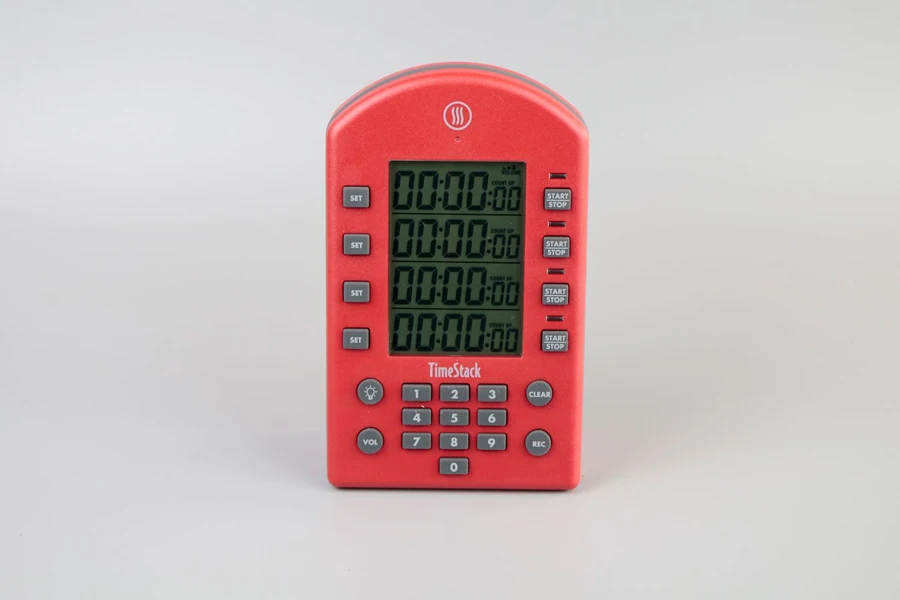
Kitchen timers with this feature are an absolute game-changer! Multiple timers let consumers keep everything on track simultaneously (e.g., roasting vegetables and simmering sauces). With this feature, consumers can easily break down their cooking processes into manageable segments, reducing stress and letting them focus on each task without worrying about burning everything.
Moreover, sellers must remember a few things when choosing products with multiple timers. First, the timer must have unique alerts for each channel, like different pitched beeps or flashing lights per timer. That way, consumers can instantly know which task needs attention. Second, setting and managing multiple timers should be intuitive and quick. So, sellers can prioritize timers with dedicated buttons for each channel, allowing consumers to make on-the-fly adjustments hassle-free.
Third, multiple-timer kitchen timers should have good displays that clearly show the remaining time for each channel. If they’re mechanical, sellers must ensure the dials have super-clear labels. Lastly, consider how many dishes consumers may want to juggle at once. Simple dual timers may be enough for some, while power users may want timers with three or even four channels.
Aesthetics
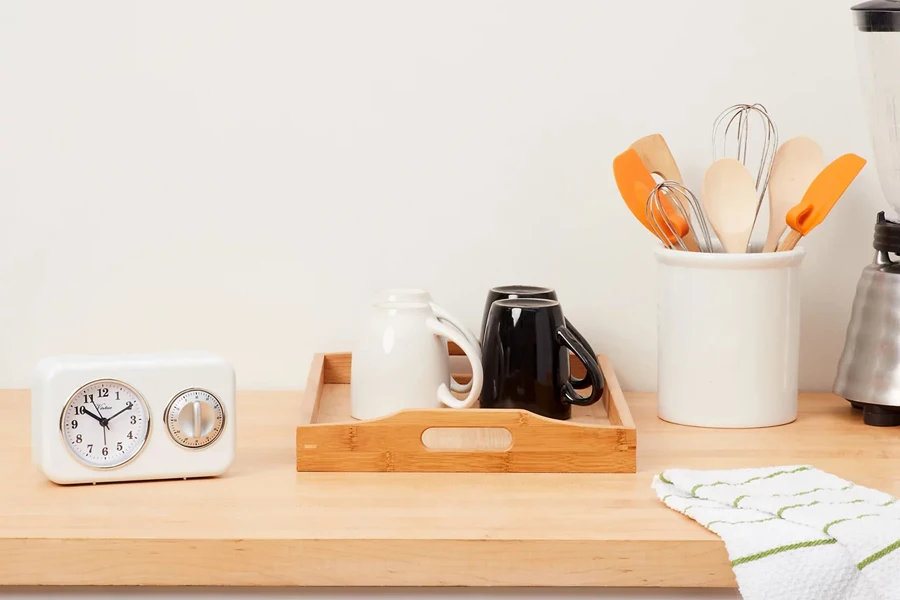
Kitchen timers come in a surprisingly wide range of aesthetics to suit different kitchen styles and preferences. They can go from classic to rustic, with many featuring interchangeable covers or accents, allowing consumers to swap aesthetics along with their kitchen’s overall look. Here are some of the best kitchen timer aesthetics that combine excellent features for the best experience.
Classic/functional
These timers have simple, utilitarian designs prioritizing readability and ease of use. Usually, they feature large, clear displays or dials. Also, manufacturers often make them from plastic or stainless steel, pairing them with neutral colors like white, black, gray, or metallic finishes. This timer aesthetic appeals to those who prefer a no-nonsense timer that blends seamlessly into the kitchen background.
Retro/vintage
These timers mimic the charm of old-fashioned kitchen tools. Manufacturers often model them after mechanical timers with winding knobs and analog dials. They can come in classic egg shapes, animal figures, or other playful designs, with metal being the preferred material (sometimes with bright-colored accents). Retro/vintage timers are the go-to for consumers hoping to add a touch of nostalgia and whimsy to their kitchen decor.
Modern/minimalist
Timers with this aesthetic offer clean lines and sleek shapes and focus on function. Digital timers often fall into this category, as manufacturers make them from stainless steel, brushed metal, glass, or high-quality plastics. They may either sport a bold statement color or more monochromatic tones (black, white, metallic). Modern/minimalist timers are great for contemporary kitchens that prioritize uncluttered designs.
Rounding up
Kitchens, whether professional or at home, are demanding environments. This makes it easy for cooks to forget something they’ve put on the stove. Thankfully, timers provide enough accuracy to help cooks stay relaxed and focus on creating amazing meals while ensuring they cook everything perfectly. However, most consumers choose the perfect timers based on type, features, alert type, and aesthetics. Hence, sellers can use this guide to stock up on the most attractive ones to attract part of the 40,500 consumers searching for kitchen timers in 2024. Finally, don’t forget to subscribe to Alibaba Read’s Home and Garden category for more tasty updates and similar topics!
